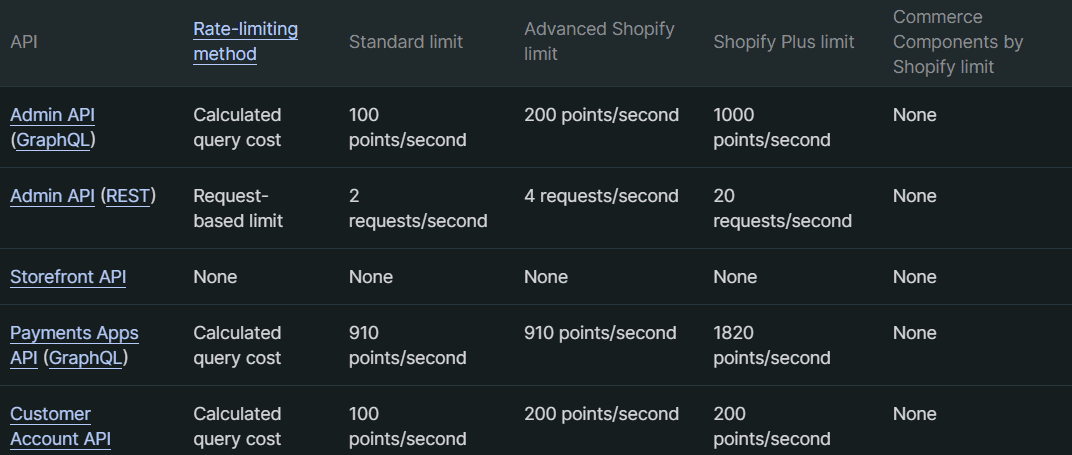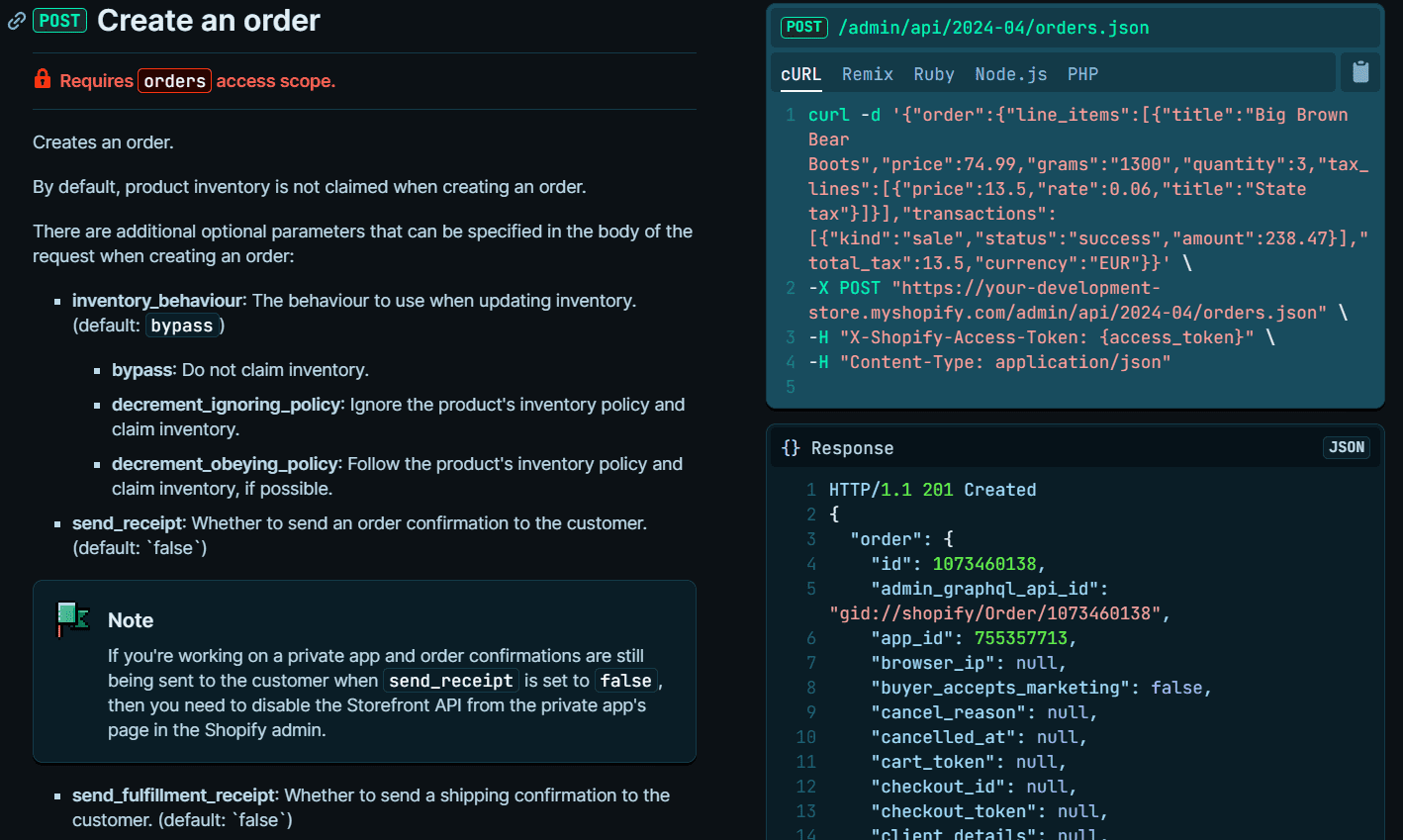The Shopify Order API might sound complicated, but it’s actually a useful tool for store owners.
Imagine you’re managing a busy Shopify store, handling lots of orders, and wishing you had some extra help. That’s exactly what this API does.
It acts like a digital assistant that keeps track of orders, updates your inventory, and ensures everything works smoothly across all sales channels.
In this article, we’ll explain what the Shopify Order API is, how it can simplify your tasks, and whether it’s right for your store.
Shopify Order API – Broken Down
There are more than 2 million Shopify merchants active, but only a few know about Shopify orders API.
While the Shopify Order API can benefit most stores, its implementation requires technical knowledge. The complexity of integrating APIs and syncing sales channels and inventories goes beyond basic Shopify usage.

In my Shopify review, I rated the ease of use as 4.7/5, but that’s only for the platform; using API is a whole different thing and requires expertise. Keep reading to know why.
What Is Shopify Order API?
First things first, API stands for – Application Programming Interface. For Shopify, API integration for orders can be crucial, considering the multichannel operations and shipping methods adopted.
Shopify Order API helps you keep track of your orders and inventory at all times and
synchronize all your order fulfillment ways, whether you use a third-party service or do it yourself.
Features And Benefits of Shopify Order API
Bringing our focus on a rather important matter here is the key feature offered by a Shopify API integration for orders – Order Management (create, update, delete, and retrieve orders)
With this, you can improve and fix the way you manage your Shopify store’s inventory. Apart from managing inventory, Shopify Order fulfillment API also enhances other processes, such as:
- Inventory syncing
- Allows sales channel tracking centrally
- Expert analytics and reporting
How to Setup Shopify Order API (Step by Step)
Shopify offers both REST and GraphQL APIs for managing your store’s data. Here’s how to set up the Shopify Order API:
1. Check API Rate Limits
Note that every API you use has certain limitations. Check out the API rate limits of the REST API here before heading to authenticate.

2. Authentication
Before you start, you must go through an app authentication process. This is a very important step every Shopify merchant who wants to use Shopify API has to take.
3. Connect With Endpoints
You can enhance the functionality and use the Shopify order API with the core endpoints below. These are the primary ways that you can use these endpoints:
- Creating orders
This endpoint helps you create an order without actually claiming your inventory. It helps create newer workflows and import orders.

- Updating orders
This endpoint helps edit details like email, phone, note, tags, meta field, shipping address, etc.
- Retrieving orders
To retrieve the data of a single closed order, you can use this endpoint to get customer information, items, shipping details, order status, etc.
- Deleting orders
With this endpoint, you can cancel, order, and test the post-cancellation behavior of your Shopify store.
4 Advanced Ways To Use Shopify Order API
To crank it up a notch, you can use the Shopify order API in 4 other advanced ways:
- Order risk – This endpoint checks for potential fraud by evaluating orders.
- Refunds – Automate the entire refund process and issue refunds as per policy.
- Transactions – To interact with five types of transactions.
- Webhooks – To get live notifications about the status of the order and trigger actions accordingly.
Note: To see practical examples of all the endpoints listed above and earlier, visit this link of the official Shopify .dev docs.
How Much Data Can Be Retrieved With Shopify Order API?
Order API allows access to order data from the last 90 days. To retrieve older data, you need to request extended historical data access.
Once granted access, you can get information on older data by adding – “read_all_orders” along with “read_orders” or “write_orders.”
But remember, if you don’t have a legitimate use for this, Shopify will restrict access.
Best Practices And Things To Consider For Shopify Order API
While using an order API for your Shopify store, it is necessary that you follow certain practices as protocols for smooth operations.
1. Rate Limits
Adhere to Shopify’s rate limits to avoid API call failures. As of 2024, the REST Admin API allows up to 80 requests per minute for most endpoints. Exceeding this limit will result in errors.
2. Data History Threshold
Be aware of the 90-day default limit for data retrieval. If you need access to older data, ensure you have a valid business reason before requesting extended access.
3. Hire An Expert
If you’re not familiar with API implementation, consider working with an experienced developer or utilizing Shopify’s extensive documentation and support resources. The complexity of integrating multiple sales channels requires careful planning and execution.
But if not done properly, it can definitely turn the tide against you!
Some Related Articles:
Conclusion: Use Shopify Order API To Automate Your Store
The Shopify Order API is a powerful tool that can significantly enhance your store’s efficiency and scalability. While its implementation may require technical expertise, understanding its capabilities is crucial for any e-commerce entrepreneur looking to optimize their operations.
Whether you choose to work with a developer or dive into the documentation yourself, the potential benefits of integrating the Shopify Order API are substantial. By leveraging this technology, you can streamline your order management, improve inventory accuracy, and ultimately provide a better experience for your customers across all sales channels.
FAQs
The Shopify Order API is a tool that helps store owners manage orders, inventory, and sales channels in one place.
It simplifies order management, syncs inventory, and helps you track sales across multiple channels, saving you time and effort.
Yes, setting up and using the API requires some technical expertise, especially for integrating with multiple sales channels and managing data.
Endpoints are specific functions like creating, updating, retrieving, or deleting orders, which help you manage your store’s operations.
Shopify’s API allows up to 80 requests per minute for most endpoints. Exceeding this limit can cause errors.

